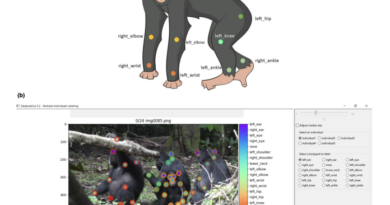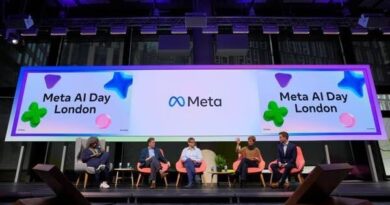Google AI Releases TensorFlow GNN 1.0 (TF-GNN): A Production-Tested Library for Building GNNs at Scale
Graph Neural Networks (GNNs) have gained significant attention in recent years as a powerful deep learning method for handling data represented by graphs. Traditional machine learning algorithms struggle to capture complex relationships and understand the connections between objects in a graph, which are vital for many real-world applications. To address this challenge, Google AI has released TensorFlow GNN 1.0 (TF-GNN), a production-tested library designed to build and train GNNs at scale.
What are GNNs and why are they important?
Graph Neural Networks (GNNs) are a class of deep learning models specifically designed to operate on graphs. A graph is a mathematical structure composed of nodes (also known as vertices) connected by edges. GNNs leverage the structural information encoded in graphs to perform inference tasks, such as node classification, link prediction, and graph-level prediction.
GNNs have gained popularity due to their ability to handle non-Euclidean data, such as social networks, citation networks, biological networks, and recommendation systems. Unlike traditional neural networks, which operate on grid-like data structures (e.g., images and sequences), GNNs can capture the complex relationships between entities in a graph, making them well-suited for tasks involving graph-structured data.
TensorFlow GNN 1.0: A new library for building GNNs at scale
Google AI’s TensorFlow GNN 1.0 (TF-GNN) is a library built on top of TensorFlow, a popular deep learning framework. TF-GNN provides a set of tools and utilities to facilitate the development and training of GNN models. It offers several key features that make it a valuable resource for researchers and developers:
1. Heterogeneous graph support
Real-world graphs often consist of different types of nodes and edges. For example, in a social network, nodes may represent users, while edges represent friendships or interactions. TF-GNN supports heterogeneous graphs, allowing developers to model and analyze complex relationships between different types of entities. This feature enables researchers to tackle a wide range of graph-based problems that require the integration of diverse data sources.
2. Efficient subgraph sampling
Training GNNs on large graphs can be computationally expensive and memory-intensive. To address this challenge, TF-GNN incorporates subgraph sampling techniques. Instead of processing the entire graph at once, TF-GNN samples small subgraphs that contain relevant information for training. This approach significantly reduces the computational cost while preserving the overall graph structure. By efficiently sampling subgraphs, TF-GNN enables the training of GNNs on large-scale datasets without sacrificing performance.
3. Flexible model building
TF-GNN provides a flexible framework for building GNN models. It allows researchers to define custom GNN architectures tailored to their specific tasks and datasets. TF-GNN’s modular design enables the combination of different GNN layers, activation functions, and aggregation methods, empowering researchers to experiment with various model configurations. This flexibility promotes innovation and facilitates the development of state-of-the-art GNN models.
4. Supervised and unsupervised training
TF-GNN supports both supervised and unsupervised training of GNN models. In supervised training, the model learns from labeled examples and optimizes a loss function to make accurate predictions. This approach is suitable for tasks such as node classification, where the goal is to assign labels to individual nodes. In unsupervised training, TF-GNN generates continuous representations (embeddings) of the graph structure, which can be utilized in other machine learning systems. Unsupervised training enables tasks such as graph clustering and visualization, where the focus is on understanding the overall graph connectivity and patterns.
Applications of TensorFlow GNN 1.0
TensorFlow GNN 1.0 opens up exciting possibilities for various domains and applications. Here are a few examples of how TF-GNN can be utilized:
1. Social network analysis
With its ability to model complex relationships in social networks, TF-GNN can be used for social network analysis tasks. For instance, it can assist in predicting user attributes, detecting communities, and identifying influential users. By leveraging the power of GNNs, researchers and developers can gain valuable insights into social structures and user behaviors.
2. Recommendation systems
Recommendation systems often rely on graph-based models to suggest relevant items to users. TF-GNN can enhance the performance of recommendation systems by capturing intricate item relationships and user preferences. By incorporating TF-GNN into recommendation pipelines, companies can provide more accurate and personalized recommendations to their users.
3. Drug discovery and protein analysis
In the field of bioinformatics, TF-GNN can be applied to drug discovery and protein analysis. By modeling molecular structures as graphs, researchers can leverage TF-GNN to predict molecular properties, identify potential drug candidates, and understand protein-protein interactions. TF-GNN’s support for heterogeneous graphs enables the integration of diverse biological data sources, leading to more comprehensive analyses and breakthroughs in drug design.
Conclusion
Google AI’s release of TensorFlow GNN 1.0 (TF-GNN) marks a significant milestone in the field of graph neural networks. TF-GNN provides a production-tested library for building and training GNN models at scale. With its support for heterogeneous graphs, efficient subgraph sampling, flexible model building, and supervised/unsupervised training, TF-GNN empowers researchers and developers to tackle complex graph-based problems and unlock new possibilities in various domains.
By leveraging the power of GNNs and TensorFlow’s rich ecosystem, TF-GNN opens up avenues for advancements in social network analysis, recommendation systems, drug discovery, and protein analysis. As the field of GNNs continues to evolve, TF-GNN serves as a valuable tool for researchers and practitioners striving to understand and harness the power of graph-structured data.
Don’t forget to follow us on LinkedIn. Do join our active AI community on Discord.
If you like our work, you will love our Newsletter 📰




